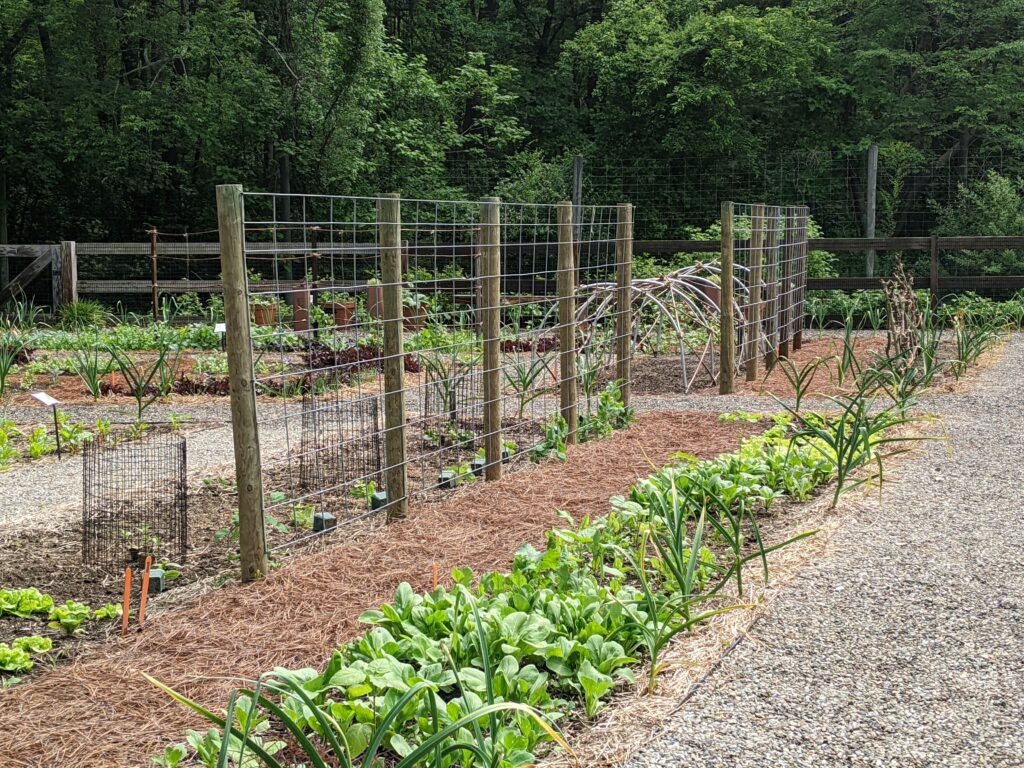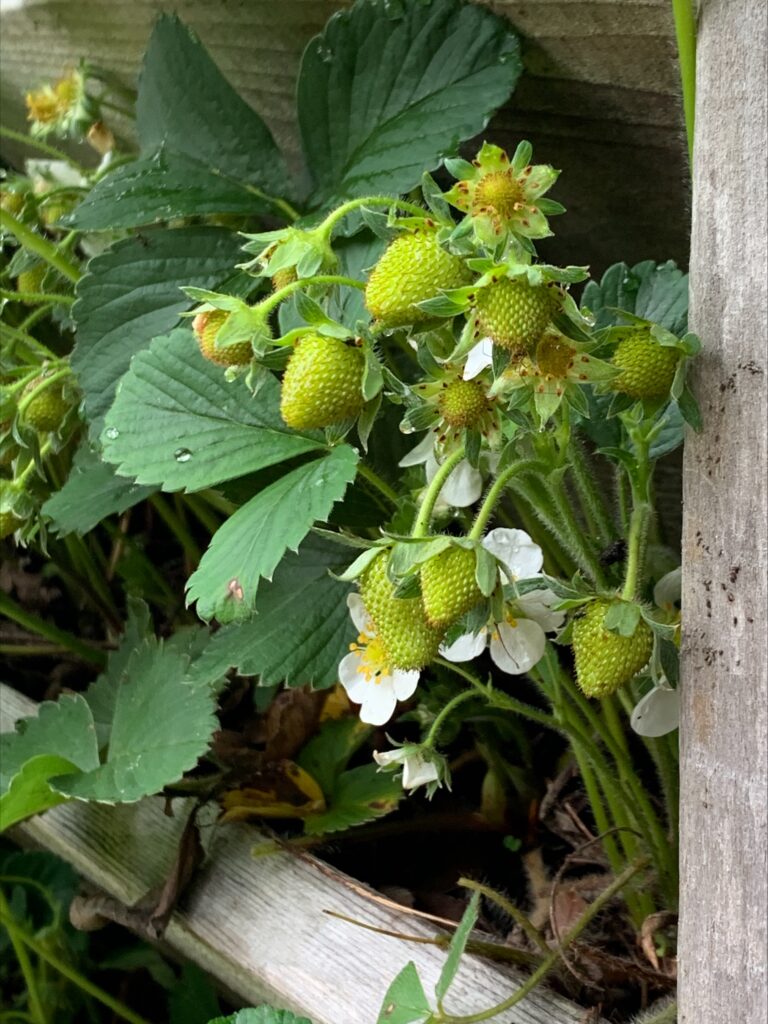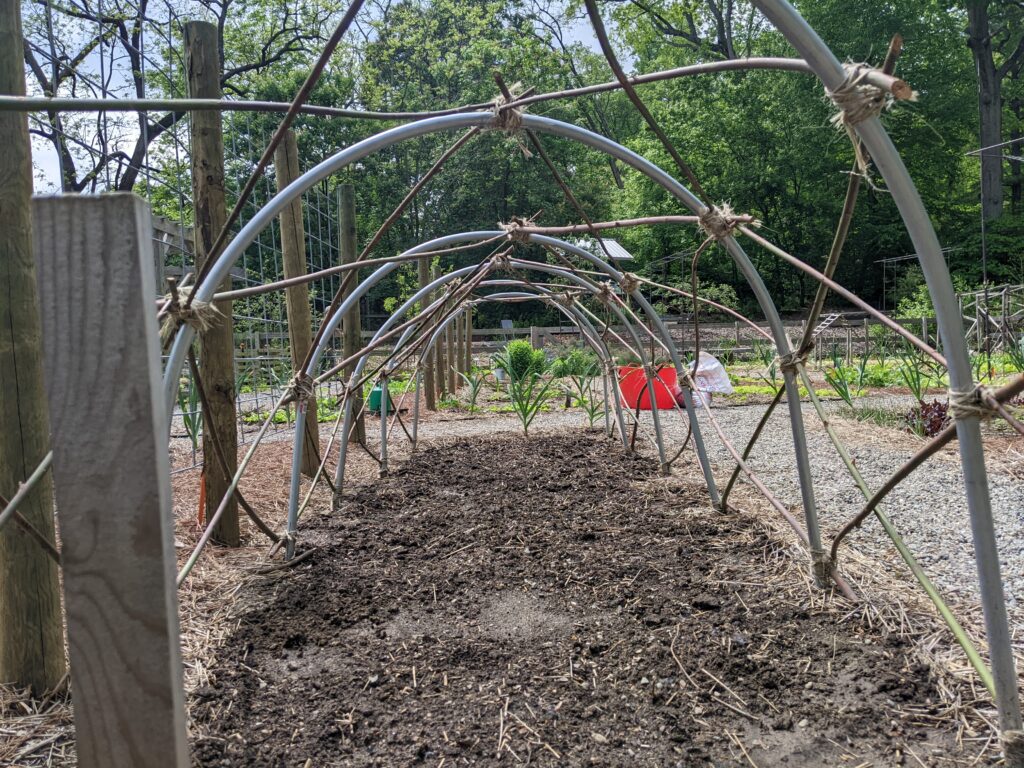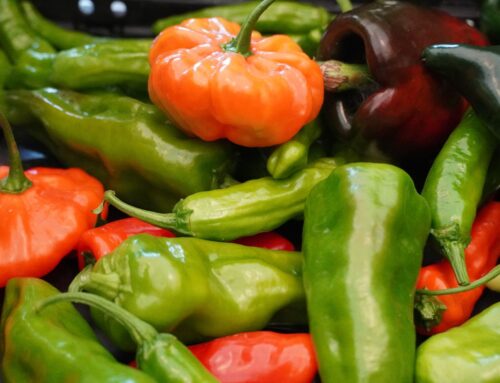I don’t know about you, but I don’t have a big space to put my vegetable garden. But I do have big goals for what I want to grow – especially now, as food prices continue to soar. Therefore, I began to explore my options for where I could go, and grow, next.
When it comes to vegetable gardening, I have several beds no wider than three feet that run along the perimeter of my fence. That’s not a large space to work with, and with my love for vine vegetables that take up a lot of room (cucumbers, eggplant, beans, etc.), I decided to go vertical as well as horizontal last year.
In summary, here are seven words about it: fewer pests, abundant harvest, and easier picking!
In addition, vertical gardening allows for better airflow, which helps to prevent issues such as powdery mildew. Plus, slugs will have more difficulty eating or damaging the fruits of your labor. Talk about a win-win!
Vertical gardening will also allow you to see your produce better and thus eliminate the grown too big, not at its peak flavor problem that can come with horizontal gardening. Goodbye, monster squash! Gardening upward can also allow plants to ripen sooner, given the additional sun exposure.
When is the best time to grow a vertical garden? The best time is anytime! You can start out vertically as you begin a garden, or you can add vertical gardening to your already existing horizontal garden. It’s never too late – or too early – to start.
Let’s jump right in with the basics. With a bit of planning and imagination, a vegetable garden can be grown anywhere (given you have enough sun and some shade), regardless of space. And since a vertical garden or green wall would eliminate most bending and extensive work, it is a great option for seniors and those with mobility or other physical limitations. Moreover, you can DIY many kinds of planters with a few inexpensive craft or salvaged items to create your own one-of-a-kind vertical growing space. Therefore, getting started doesn’t have to cost an arm and a leg.
A fence, trellis, pergolas, posts, poles with strings or nets, and cages can serve as a great vertical space for beans, peas, tomatoes, squash, cucumbers, melons, pumpkins, sweet potatoes, and more. For example, you can use the rungs of a ladder to train vines while placing the vegetable (ex., pumpkins) on its steps for further support. So let your creativity run wild! As a bonus, no matter how you build them, trellis structures can serve double duty as a privacy screen for a patio or small yard. Once the lush vines of your veggie plants grow upwards, they will have your small space feeling like a garden oasis. Unless the neighbors stop by to check out what you’re growing, that is!
But how do you pick (or build) the right vertical structure for what you want to grow? The first step is to know your plants. Some – like beans – will happily twine themselves around whatever support they are given. Others – like pumpkins – will need to be tied to a structure with twine. So start with a little research into the plants themselves.
Once you have your plants decided you can consider your vertical structure. Here are just a few options:
- Bamboo trellis – check with a neighbor who has bamboo to see if they will let you cut some. Most will be glad you took some off their hands since they have rhizomes that expand quickly and can go into places you don’t want.
Cut 8-12 bamboo stalks and tie them at the top.
- Take an old wooden ladder, place plants in containers, and stack them on the shelves nicely. Then, the ladder can be leaned against an outside wall. A great way to gain height!
- Make a strawberry tower with inexpensive plastic piping. Cut out tiny sections (strawberries don’t need much soil to thrive). Stand the pipe up in a weighted clay pot.
- Spray paint upcycled tin cans and attach them to your fence.
- Grow herbs right where you need them – in the kitchen (near a window). Put them in a pot and hang them on the wall.
- Upcycle a wooden pallet. I have grown eggplant on it without pots, or you can attach pots to it and grow various plants on it.
- Using several pots and a rope threaded through each clay pot’s center drainage hole, you create a series of hanging pots from your balcony or screened porch. The trick is to make a loop at the top of the rope for hanging the series of pots on a hook, and you then make knots big enough that they hold the pots in place and don’t let them slip down. If you have a patio or a balcony, this can be a beautiful way to add fresh herbs to your diet.
- Take a towel rack or a wood dowel with brackets for hanging pots along a fence or wall. Use colorful hangers and maybe even add a sign like “Grow up”, “Committed to Growth”, “Time to Grow”, “Please Grow”, and “Let It Grow”.
- Upcycle a dresser. Place it outside, fill it with soil and stagger how far the drawers are pulled out to create a cascading waterfall-like effect.
- Recycle two-liter soda bottles. Attach a string to each soda bottle with a hole cut in it, fill it with soil and a vegetable or herb, and then hang them on a clothesline attached to the wall or fence.
- Hang a shoe organizer and place soil and plants in the pockets.
- Salvage rain gutters and drill holes in the bottom for drainage. Fill with soil and plants and attach to a wall or fence.
- An old used bike can be used as a frame offering great support. First, partially submerge the wheels for stability, and then put your vining plants in the soil along the wheels and frame.
- Use hose clamps to fasten small pots or mason jars to an old cutting board. Add about an inch of pebbles to the bottom of each container and then fill with potting soil and herbs such as basil, chives, mint, oregano, and sage. Locate in a well-lit area in your kitchen for quick and easy usage.
The next step is to get your plants and get growing! Gardening is a grand experiment, so give it a shot and see what works for you. And let us know! We love to hear about adventures in the garden.
We hope you will visit Lucille’s Garden for vertical gardening inspiration. Right now, we’ve got strawberries growing in a vertical planter and plenty of trellises in action for beans and other vining vegetables. Stop by to see these concepts and ideas in practice and many more.









